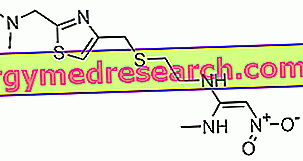
Sildenafil is the most famous and most used drug to treat erectile dysfunction disorders, ie the inability to achieve or maintain an erection suitable for satisfactory sexual activity.

In order for sildenafil to work, sexual stimulation is also necessary, otherwise its use would be useless.
How does it work
The physiological process responsible for erection of the penis includes the release of a certain amount of nitric oxide (NO) in the cavernous body during any sexual stimulation. Nitric oxide, in turn, activates an enzyme called guanyl-cyclase which causes an increase in the levels of cyclic guanosine monophosphate (cGMP), producing relaxation of the smooth muscles of the cavernous body and thus allowing the flow of blood into the penis .

Birth of Viagra
Sildenafil was conceived and synthesized by a group of chemists belonging to the British research office of the Pfizer pharmaceutical company in Kent, England.
Initially sildenafil was conceived and tested for the treatment of arterial hypertension and angina pectoris. Since the first clinical trials, conducted at the Morrison hospital in Swansea, the researchers found that the drug had almost insignificant healing properties as regards the treatment of angina pectoris, but induced massive erections in patients to whom it was administered to treat the angina pectoris. At that point, the pharmaceutical company Pfizer decided to put the drug on the market for the treatment of erectile dysfunction, rather than for the treatment of angina pectoris, making it one of the best-selling drugs of all time. The sildenafil molecule was patented in 1996 and was approved for use in patients suffering from erectile dysfunction in March 1998 by the Food and Drug Administration (FDA), making it the first oral treatment approved by a health authority for treatment of erectile dysfunction in the United States of America.
Sildenafil was marketed in the United States a few months after the FDA approved it, under the registered name and now known to all of Viagra ® . The commercialization of sildenafil proved to be a great success not only in the United States, but throughout the world, yielding millions of dollars every year to the pharmaceutical company Pfizer, which still owns the patent. The attribution of the invention of sildenafil was the subject of a discussion between the pharmaceutical company Pfizer and the British press, according to which the inventors of sildenafil are Peter Dunn and Albert Wood, whose name appears in the patent for the production of the drug, while the pharmaceutical company denies and proclaims Nicholas Terrett and Peter Ellis as inventors of the sildenafil, whose name accompanies the original patent for the synthesis of the drug. Another curiosity regarding the marketing of Viagra is that, although the drug is subject to medical prescription, especially at the beginning of its market launch, it was advertised directly on television using also very famous characters, such as the Brazilian footballer Pelè. For many years, sildenafil was the only drug on the market used for the treatment of oral erectile dysfunction, so much so that in 2000 it occupied 92% of the prescriptions for the treatment of erectile dysfunction, while in 2007 this percentage dropped to 50 %; the descent was mainly attributed to the marketing of other similar drugs but also to other causes.
Buy viagra on the internet
For years now, the popularity of Viagra has also conquered the internet pages, many of which offer sildenafil without the need for a medical prescription, after registration and online payment, with delivery of the drug directly to the person's home. This is a highly discouraged practice because before taking sildenafil it is necessary to carry out medical checks to avoid the risk of side effects. Another reason why the purchase of sildenafil through the Internet is not recommended is that there are many counterfeit drugs in circulation, on which no control has been performed by the competent authorities. To facilitate the sale of sildenafil, and also to prevent patients from obtaining it via the internet, they have been thinking for some years of selling the drug simply after consultation with the pharmacist and in some countries, such as in England for example, this system is already being applied in selected cities. The production and trade of sildenafil (Viagra) are protected by two patents belonging to the pharmaceutical company Pfizer. Pfizer's patent for Viagra in the United States was due to expire in 2012 but in August 2011, after the house was requested, a federal court postponed the expiry of the patent until 2019.
Pharmacodynamics and safety of use
What makes sildenafil special is its selectivity for phosphodiesterase type 5 (PDE 5), an enzyme involved in the erection process of the penis. From in vitro studies it has been noticed that the affinity of sildenafil towards other phosphodiesterases is generally low, and varies according to the type of phosphodiesterase considered. For example, the selectivity for PDE 6, which is involved in the processes of phosphotransduction in the retina, is 10 times lower than that shown for PDE 5, while the selectivity of sildenafil for PDE 3 is about 4000 times lower than the selectivity shown towards the PDE 5.
Other clinical studies have been conducted with the aim of assessing the time interval from when the drug is taken up to the time when sildenafil starts to take effect; since the patient does not always know if he will need the help of the drug, knowing exactly the length of this interval would be very useful. After administration of sildenafil to patients on an empty stomach, the appearance of the desired effect was observed in a range ranging from 12 to 37 minutes, with an average of 25 minutes, while the duration of the positive effect of the drug on erection it can continue up to 4-5 hours from the time of intake, always when you have a sexual stimulus. Other studies have been carried out to observe the effects of sildenafil on the cardio-circulatory system. In general, it has been noted that sildenafil does not cause any alteration of cardiac output and does not in any way compromise blood circulation through the coronary arteries. In fact, the administration of sildenafil in doses up to 100 mg, in healthy volunteers, did not produce any clinically significant effect on the electrocardiogram. Administration of the drug was also carried out in subjects suffering from severe coronary artery disease, to study the possible negative effects; in these patients, after the administration of sildenafil, only a slight decrease in systolic and diastolic pressure was noted, in addition to a reduction in mean systolic pulmonary pressure of about 9%. After about an hour from the administration of a dose of 100 mg of sildenafil, a particular undesirable effect was observed in some subjects: a slight alteration of the chromatic perception, specifically of blue and green, an effect attributed to the sildenafil inhibition of the PDE 6 enzyme, which as we have seen is part of the cascading phototransduction process in the retina. This effect disappeared spontaneously within two hours of drug administration.
In another study the positive effect of sildenafil in the treatment of erectile dysfunction was studied in patients suffering from various pathologies that compromise the erection and sexual life of the patient himself. In this study, about 3, 000 patients between the ages of 19 and 87 years who had medical conditions such as hypertension, cardiovascular disease and ischemic heart disease, Diabetes Mellitus, spinal cord injury, hyperlipidemia, depression and transurethral resection of the prostate were considered. The patients mentioned above, after the administration of sildenafil, showed a remarkable improvement in achieving an erection; more precisely, 62% of patients responded positively already to the dose of 25 mg of sildenafil, 74% of patients responded positively to the dose of 50 mg and 82% of patients responded positively to the 100 mg dose of sildenafil .



